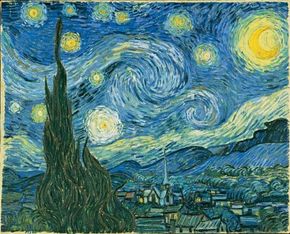Although Vincent van Gogh eventually would become the most recognizable name in nineteenth century art, he didn't always seem destined for life as a painter. Indeed, it wasn't until the age of 27 when, after brief sojourns into different professions -- including those of art dealer, teacher, and lay minister -- van Gogh devoted himself to painting.
Vincent quickly developed his own style, learning by studying the Impressionists and Japanese art. In 1885 Vincent moved to his brother Theo's apartment in Paris, where he started building a career as a painter. But he earned little notice in the capital city, and, out of frustration, left Paris in 1887 for Arles, in the south of France, where he hoped to establish a "studio of the south." In Arles van Gogh moved into the Yellow House, where he worked prodigiously and for a while hosted his friend and mentor Paul Gauguin.
Advertisement
Sadly, Vincent van Gogh's vision of an artist community in Arles never came to be. Gauguin left after a disagreement, and Vincent's bouts with depression and epilepsy -- during which Vincent famously sliced his own ear -- forced van Gogh into a psychiatric asylum in nearby Saint-Rémy-de-Provence. His dream of an artist community in Arles dashed, van Gogh left the asylum in 1890 and boarded a train for Auvers-sur-Oise, where, still crippled by epileptic fits and increasing depression, he worked furiously and brilliantly until late July, when he committed suicide.
Vincent van Gogh's career as a painter was brief but powerful, and he left an oeuvre that reflected his passion and desire to provide a balm for the troubled modern condition. As he famously wrote to his brother Theo: "I want to do drawings which touch some people." In van Gogh's brilliant use of color and innovative brush strokes, he managed to convey the empathy, emotion, and love for humanity that he so often craved and failed to find in his own short life.
Advertisement
